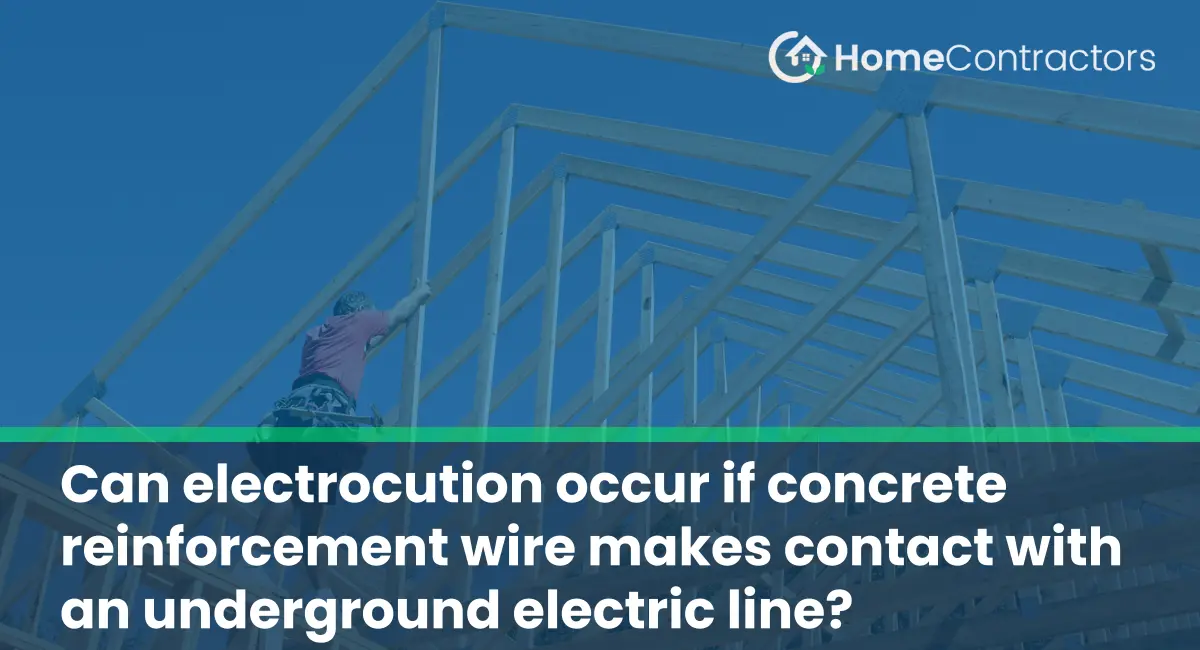In construction projects involving the installation of utilities and infrastructure, it is crucial to prioritize safety precautions, particularly when it comes to dealing with electrical systems. Electrocuting hazards can arise when underground electric lines come into contact with other materials, such as concrete reinforcement wire. This article delves into the risks associated with the contact between concrete reinforcement wire and underground electric lines, exploring potential safety concerns and precautions to prevent accidents.
Understanding Concrete Reinforcement Wire and Underground Electric Lines
Concrete reinforcement wire, commonly known as rebar, is a critical component in construction projects that require reinforced concrete structures. It is typically made of steel, providing strength and durability to concrete structures like foundations, walls, and beams. Rebar is often installed in a grid pattern, forming a supportive framework within the concrete.
On the other hand, underground electric lines carry electrical current beneath the surface, providing power to homes, businesses, and public facilities. These lines are typically insulated to prevent direct contact and protect against electrical shocks. However, when other materials, like concrete reinforcement wire, come into contact with the lines, the risk of electrocution becomes a concern.
Electrocution Risk from Concrete Reinforcement Wire
When concrete reinforcement wire touches an underground electric line, it creates a potential pathway for electrical current to flow through the metal. The risk of electrocution in such situations depends on several factors, including the voltage of the electric line, the moisture content of the surrounding ground, and the duration of contact between the wire and the electric line.
Voltage Levels
The voltage level of the underground electric line plays a crucial role in determining the level of danger associated with contact with concrete reinforcement wire. Higher voltage lines present a greater risk of electric shock since they carry a higher amount of electrical current. Therefore, cautious measures must be taken during construction projects involving high-voltage electrical lines.
Moisture Content
The amount of moisture present in the ground surrounding the concrete reinforcement wire can also influence the potential for electrocution. Moist soil is a better conductor of electricity than dry soil. If the ground around the wire is damp or saturated with water, it increases the likelihood of electrical current bypassing the insulating qualities of the soil and entering the wire.
Duration of Contact
The duration of contact between the concrete reinforcement wire and the underground electric line can determine the extent of danger involved. A brief, momentary contact may result in a minor electrical shock or jolt, whereas extended contact can increase the risk of electrocution. It is crucial to recognize and rectify such situations promptly to mitigate hazards and ensure worker safety.
Precautions to Prevent Electrocution
To safeguard against electrocution hazards arising from the contact between concrete reinforcement wire and underground electric lines, several precautions can be implemented on construction sites. These precautions include:
1. Project Planning and Communication
Effective planning and communication play a central role in preventing accidents. Construction teams should properly identify and map out the locations of underground electrical lines. Regular communication with utility companies and relevant authorities helps construction projects proceed safely and with minimal risk of encountering underground electric lines.
2. Grounding and Insulation
Ensuring proper grounding and insulation of all electrical systems is crucial. This protects against electrical shock hazards, preventing current leakage and mitigating the risk of electrocution. Reinforcement wire should be positioned and handled with caution, keeping it separate from exposed or uninsulated electrical lines.
3. Post Warning Signs
Clearly marked warning signs around construction areas can help alert workers and visitors about the presence of underground electric lines. Visual indications, such as yellow caution tape or signage, should be used to signify the potential dangers associated with these electrical systems. Adequate training should be provided to ensure workers understand the importance of abiding by these warning signs.
While contact between concrete reinforcement wire and underground electric lines can create a potential risk of electrocution, diligent safety measures and precautions can significantly minimize these hazards. Construction teams should prioritize proactive planning, effective communication, proper grounding, and insulation practices, along with prominently displayed warning signs. By adopting these precautions, construction sites can ensure the safety of workers and reduce the likelihood of accidents resulting from electrical contact.
